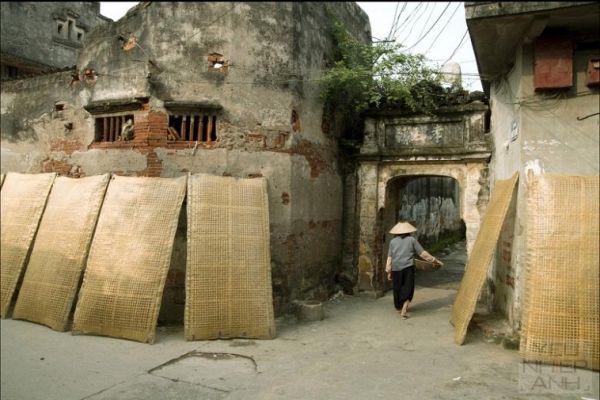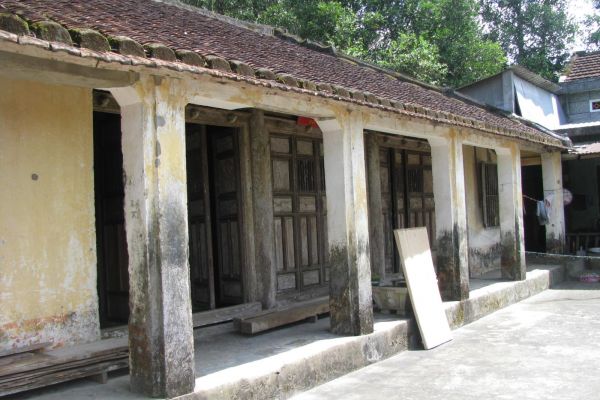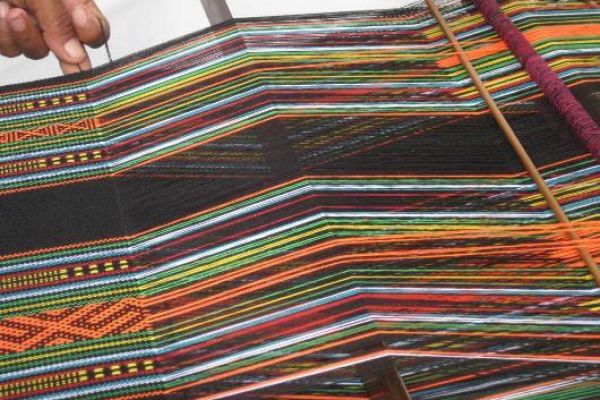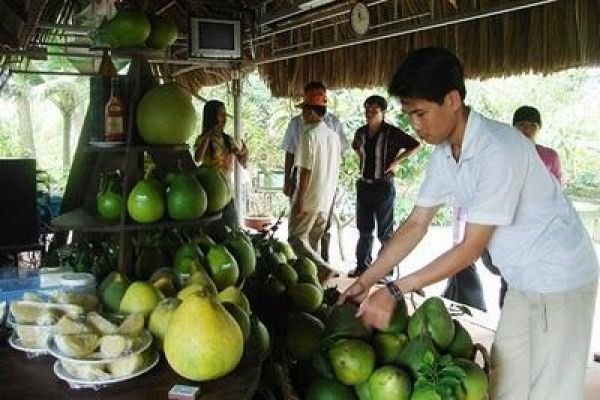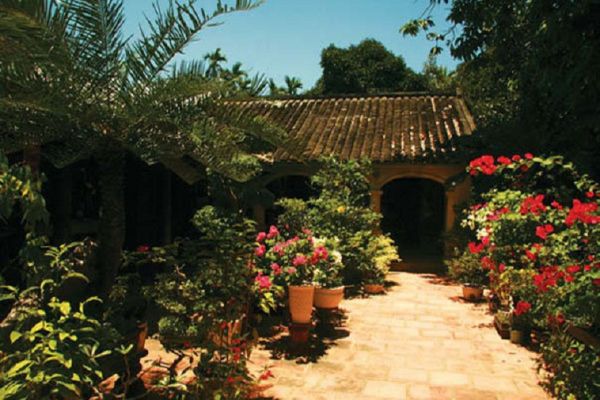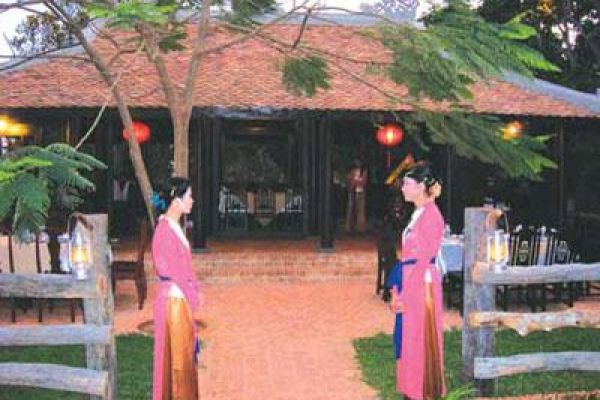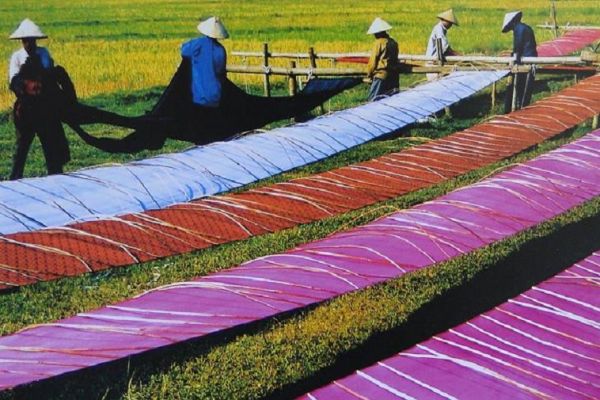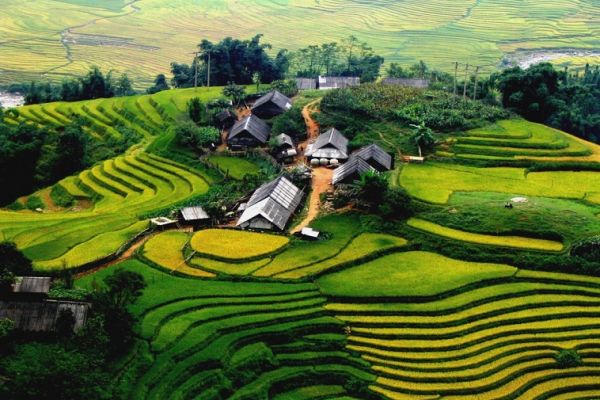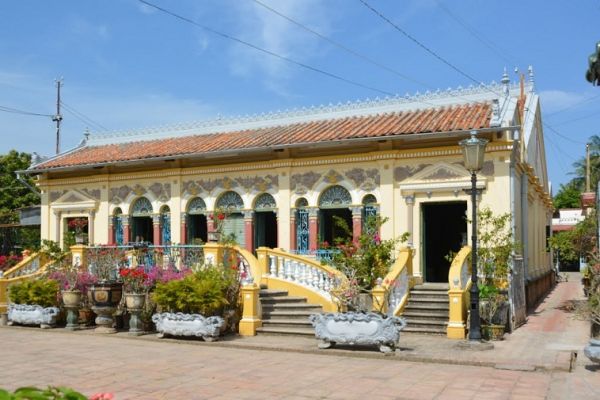Translated from the Chinese, the name “Thu le” means “giu le”, (literally keeping politeness and rites), which shows that the villagers attach much importance to maintaining their rites, customs and disciplines. Thu Le is an agricultural village but it is famous for such cultural works as pagodas and communal houses.
It is also famous for Ngu Hanh Temple built to worship Princess Huyen Tran during the Tran Dynasty (1225-1400) who followed her husband to reclaim new lands in the South. There is also Van Thanh Temple to worship Khong Tu and Vo Thanh Temple to worship Quangong.
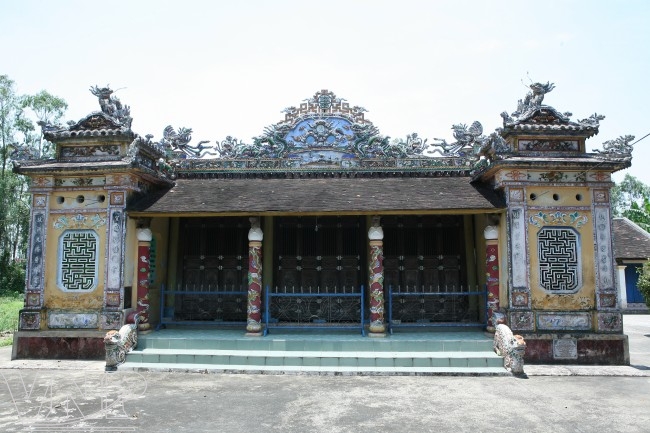
Thu Le Village’s pagoda. Photo: Cong Dat
In the village, there are 14 families, including eight large families, namely Le, Nguyen, Ho Dang, Phan Gia, Phan Ngoc, Phan Nhu, Ngo Van and Ngo Thoi. According to the village’s custom, each large family together with the authorities and villagers, take responsibility for organizing worshipping rites during the year.
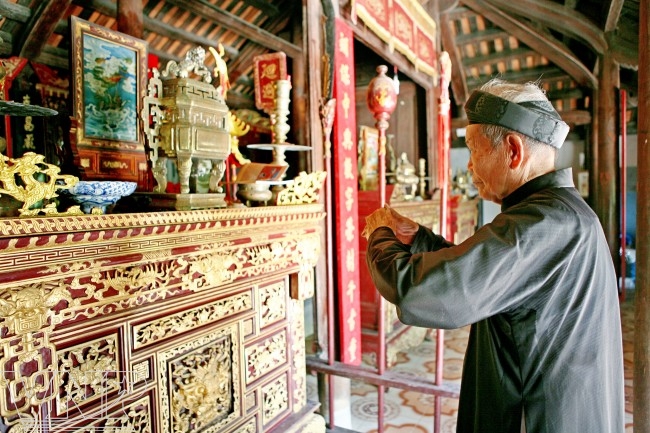
Offering incense at a family’s worshipping house in Thu Le Village. Photo: Cong Dat.
All the parts made from wood in the pagoda were carved with delicate patterns, showing the skillfulness and talent of artisans in My Xuyen Village in the past. On the main four doors, artisans created four-season paintings and eight beautiful objects with five bats holding in their mouths the Chinese script “Tho”, symbolizing five good fortunes. For a long time, Thu Le Village’s pagoda has been the place for organizing religious activities and is a charming destination for tourists nationwide.
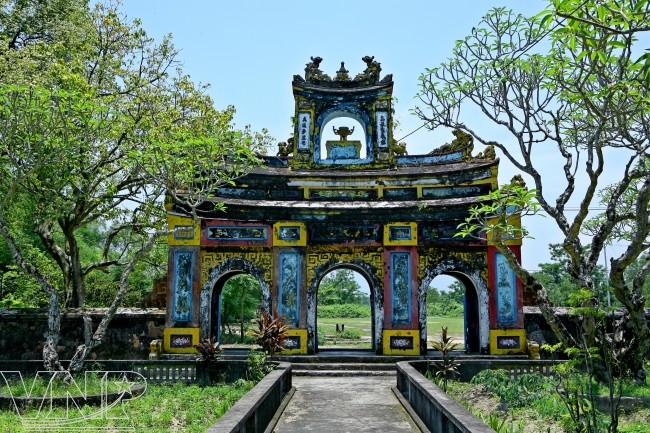
The three-entrance gate to the village’s pagoda. Photo: Cong Dat
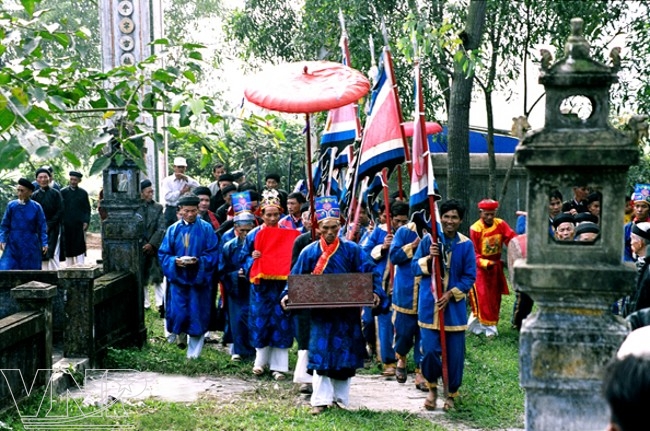
The procession of the village’s tutelary god. Photo: Pham Ba Thinh

Boat-racing festival in the early spring in Thu Le Village. Photo: Pham Ba Thinh
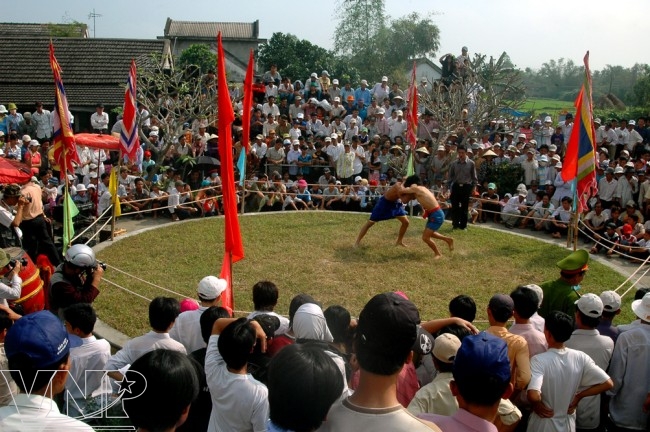
Thu Le Village’s traditional wrestling festival. Photo: Pham Ba Thinh
Source: Vietnam.vnanet.vn




